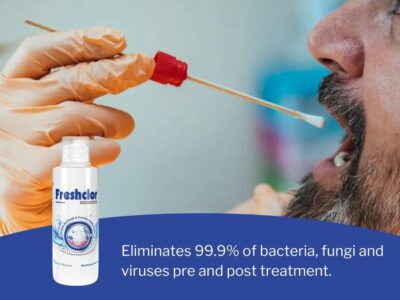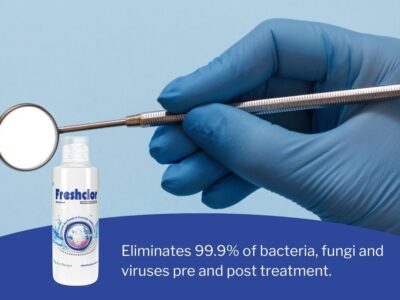– Dr Veena Desai Malhotra
Introduction
A serious, but otherwise rare fungal infection, has been observed in a number of Covid-19 patients recently.
A rare but serious fungal infection, known as mucormycosis and colloquially as “black fungus”, is being detected relatively frequently among Covid-19 patients in some states. The disease often manifests in the skin, also affects the lungs and the brain.
What is mucormycosis?
Mucormycosis, commonly called BLACK FUNGUS, is a rare but serious fungal infection caused by a kind of fungus called mucormycete, which is abundant in the environment. It mainly affects people who have health problems or take medicines that lower the body’s ability to fight germs and sickness.
Mucormycosis is a very rare infection. It is caused by exposure to mucor mould which is commonly found in soil, plants, manure, and decaying fruits and vegetables. It is ubiquitous and found in soil and air and even in the nose and mucus of healthy people.
Doctors believe mucormycosis, which has an overall mortality rate of 50%, may be triggered by the use of steroids, a life-saving treatment for severe and critically ill Covid-19 patients.
Steroids reduce inflammation in the lungs for Covid-19 and appear to help stop some of the damage that can happen when the body's immune system goes into overdrive to fight off coronavirus. But they also reduce immunity and push up blood sugar levels in both diabetics and non-diabetic Covid-19 patients.

What are the symptoms of mucormycosis?
Warning signs include
- pain and redness around the eyes or nose, with
- fever, headache, coughing, shortness of breath, bloody vomits, and
- altered mental status.
According to the advisory, infection with mucormycetes should be suspected when there is:
* Sinusitis — nasal blockade or congestion, nasal discharge (blackish/bloody);
* Local pain on the cheek bone, one-sided facial pain, numbness or swelling;
* Blackish discoloration over bridge of nose/palate;
* Loosening of teeth, jaw involvement;
* Blurred or double vision with pain;
* Thrombosis, necrosis, skin lesion;
* Chest pain, pleural effusion, worsening of respiratory symptoms.
Experts advise that one should not count all cases of blocked nose as cases of bacterial sinusitis, particularly in the context of immunosuppression and/or Covid-19 patients on immunomodulators.
Do not hesitate to seek aggressive investigations for detecting fungal infection, they advise.
Oral Manifestations Of Mucormycosis – Usually include bone exposure and necrosis, which demands histopathological examination to confirm the diagnosis because of its nonspecific features and possible similarities to bacterial osteomyelitis, trauma, and iatrogenic infections.
Oral mucormycosis without any other systemically compromised organs is quite uncommon. Other case reports of oral manifestations related to mucormycosis identified triggering or predisposing factors for local and systemic conditions.
The most important risk factors of invasive mucormycosis in these patients are
- trauma,
- diabetes,
- glucocorticoid use,
- hemopoietic malignancies,
- prolonged neutropenia,
- allogeneic hematopoietic stem cell transplant, and
- solid organ transplant.
Hence, the infection is dire and causes
- blindness,
- organ dysfunction,
- loss of body tissue due to infection, and
- ultimately death.
How does COVID-19 trigger mucormycosis?
Mucormycosis is a unique but serious fungal infection which is seen in people with poor immunity or who are immuno-compromised. That is why almost always mucormycosis is seen in people who have uncontrolled diabetes, those who are on steroids or other immunosuppressant medication where their immunity is compromised. In the process of treating COVID-19, many times we have to use steroids and other drugs to control their disease process or lung infection and save their life.
In that process their immunity also gets affected. A weakened immune system and the use of such life-saving medication during the course of illness can increase their susceptibility to get mucormycosis.

Who is at risk for mucormycosis?
Vulnerable groups include people who have health problems or take medicines that lower the body’s ability to fight germs and sickness.
Those suffering from more than one or two ailments such as diabetes, cancer, obesity, high blood pressure, or HIV that is Human Immunodeficiency virus may be at a greater risk of it. Hence, the infection is dire and causes blindness, organ dysfunction, loss of body tissue due to infection, and ultimately death.
How to diagnose?
The diagnosis of this infection can be made with the help of a CT scan and even an endoscopy. Once, the infection is detected then the patient will be given antifungal therapy. The patient will need surgical interventions if the infection takes a toll on his/her organs. A doctor will decide the course of treatment based on the condition of the patient. The treatment will vary from person-to-person. Patients should not ignore the symptoms and delay the treatment.
What’s the treatment?
- While it is treated with antifungals, mucormycosis may eventually require surgery.
- Most important to control diabetes, reduce steroid use, and discontinue immunomodulating drugs.
- To maintain adequate systemic hydration, the treatment includes infusion of normal saline (IV) before infusion of amphotericin B and antifungal therapy, for at least 4-6 weeks.
- Experts in the task force have stressed the need to control hyperglycemia, and monitor blood glucose level after discharge following Covid-19 treatment, in diabetics & non diabetics, both.
- One should use steroids judiciously — correct timing, correct dose and duration are important.
Management of Covid patients with mucormycosis is a team effort involving microbiologists, internal medicine specialists, intensivist neurologist, ENT specialists, ophthalmologists, dentists, surgeons (maxillofacial/plastic) and others.
Life after surgery for mucormycosis
Mucormycosis can lead to loss of the upper jaw and sometimes even the eye. Patients would need to come to terms with loss of function due to a missing jaw — difficulty with chewing, swallowing, facial aesthetics and loss of self-esteem.
Eye or upper jaw, these can be replaced with appropriate artificial substitutes or prostheses. While prosthetic replacement of the missing facial structures can commence once the patient stabilises after surgery, it is our duty as doctors, to reassure him about the availability of such interventions instead of leaving him to panic with the sudden unforeseen loss, augmenting a post-Covid stress disorder which is already a reality. said Dr B Srinivasan, a maxillofacial prosthodontist.
Prosthetic reconstruction can be effected after surgery, but interim solutions should be planned even before surgery of the jaws for better long-term outcomes. Prosthetic reconstruction can ensure that the cure is not more dreadful than the disease itself.
How can one prevent it?
One should remember that it is a rare disease. However, some groups of people are more vulnerable than others. What predisposes patients is uncontrolled diabetes mellitus, immunosuppression by steroids, prolonged ICU stay, and comorbidities — post transplant/malignancy, voriconazole therapy.
- Experts advise that to masks if you are visiting dusty construction sites.
- Wear shoes, long trousers, long-sleeved shirts and gloves while handling soil (gardening), moss or manure.
- Maintain personal hygiene including a thorough scrub bath.
- It is advisable that everyone follows pristine oral hygiene.
Pristine oral hygiene can be followed in the following ways:
- Brushing twice daily for a min 2 min
- Use of mouthwash
- Not sharing toothbrush.
- Not using common holder.
- Disinfecting the toothbrush each time after use by dipping it in a antiseptic mouthwash
- Disposing the toothbrush post recovery from Covid-19.
References-
1. Garg .D, Muthy .V, Coronavirus Disease (Covid-19) Associated Mucormycosis (CAM): Case Report and Systematic Review of Literature,Case Reports, Mycopathologia. 2021 May;186(2):289-298. Epub 2021 Feb 5.
2. Khatri A et al, Mucormycosis after Coronavirus disease 2019 infection in a heart transplant recipient – Case report and review of literature, J Mycol MeD 2021 Apr 2;31(2):101125.
3. R. Shweta , P S Supriya , COVID-19 triggering mucormycosis in a susceptible patient: a new phenomenon in the developing world?, BMJ Case Rep: first published as 10.1136/bcr-2021-241663 on 27 April
5. Prakash H, Chakrabarti A, Global epidemiology of mucormycosis. J Fungi 2019;5:26.doi:10.3390/jof5010026
6. Abreu pauli et al. ,Painful palatal lesion in a patient with COVID-19, Oral Surg Oral Med Oral Pathol Oral Radiol. 2021 Mar 28

![Covid -19 associated Mucormycosis [CAM]](https://dentalreach.today/egraliph/2021/05/_118428511_gettyimages-1215124320-170667a_6805039c88cdfbe8e8f0cd3f505a5a47_2000-800x400.jpg)















Comments